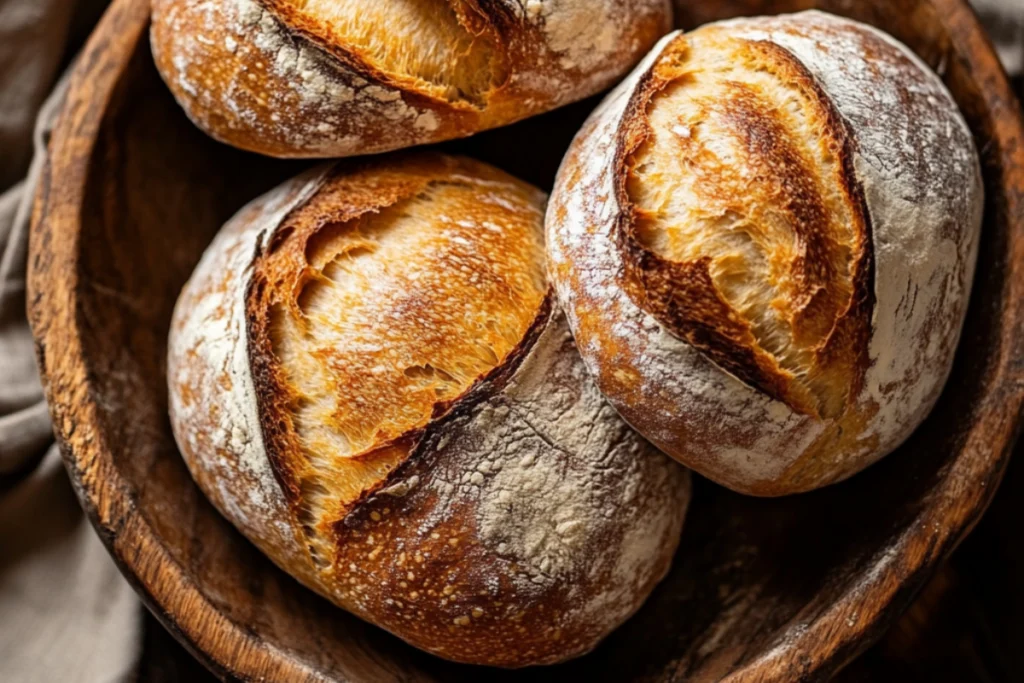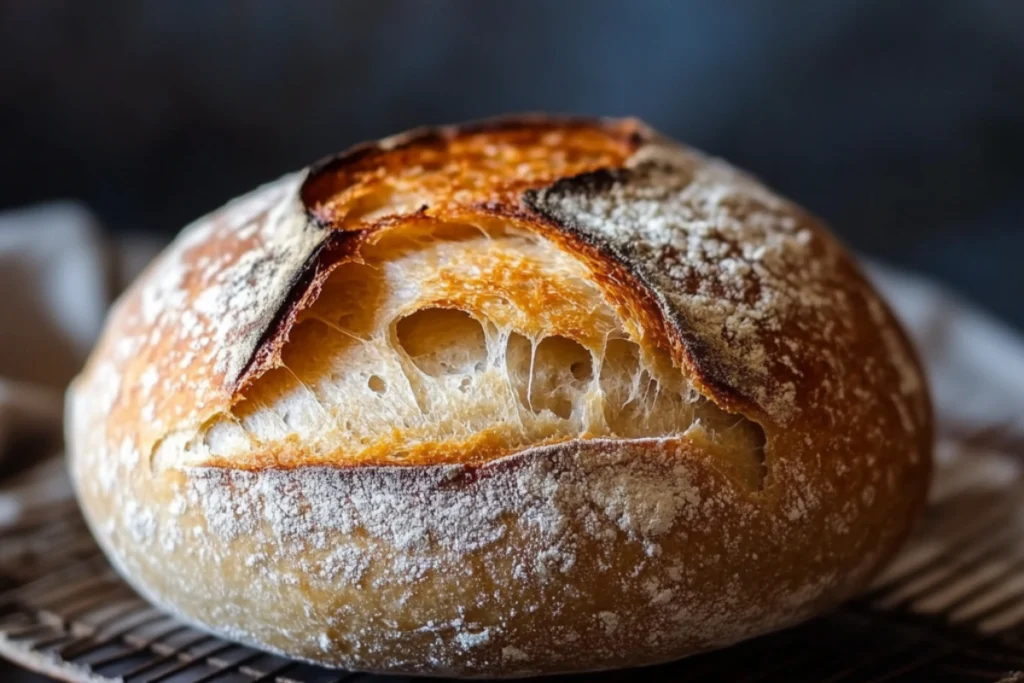Sourdough baking has surged in popularity, with many home bakers maintaining sourdough starters for the unique flavor and texture it brings to bread. However, one aspect that often causes confusion is how to handle sourdough discard. This byproduct of maintaining a starter can accumulate quickly, leaving bakers wondering how long it can sit before it needs to be used or thrown away. This article dives deep into the shelf life of sourdough discard, providing practical storage tips, safety considerations, and creative ways to use it.
Part 1: Understanding Sourdough Discard and Its Storage
Introduction to Sourdough Discard
Sourdough discard is the portion of the starter that is removed during feeding. This process keeps the starter healthy and ensures it doesn’t grow too large. While it might seem like waste, discard is still rich in nutrients and can be used in various recipes. However, knowing how long it can sit before it spoils is crucial for both safety and quality.
Proper management of discard is essential for anyone who regularly bakes with sourdough. Handling and storing it correctly can help reduce waste, extend its usability, and maintain the quality of your baked goods.
Factors Affecting Sourdough Discard Longevity
Several factors influence how long sourdough discard remains usable. Understanding these factors will help you maximize its shelf life and maintain its quality.
- Temperature: Discard stored at room temperature spoils faster due to bacterial growth. Warmer temperatures accelerate this process, while cooler temperatures, such as in a refrigerator, slow it down.
- Hydration Level: The water content in your discard affects how long it lasts. Higher hydration levels can encourage faster spoilage because bacteria thrive in moist environments.
- Type of Flour: Whole grain flours, such as whole wheat or rye, contain more natural oils, which can lead to quicker spoilage. White flour discard typically lasts longer.
- Age of Discard: Fresh discard has a longer shelf life compared to discard that has been sitting for several days. Over time, the quality of discard decreases, making it less ideal for baking.
For more detailed information on extending the shelf life of sourdough discard, The Dough Academy offers valuable insights.
How Long Can Sourdough Discard Sit at Room Temperature?
Sourdough discard left at room temperature should be used within a few hours to maintain its quality. Leaving discard out for too long can lead to spoilage, characterized by an unpleasant smell, mold growth, or an overly sour taste.
- Maximum Time: Discard can typically sit at room temperature for up to 24 hours. However, this time frame depends on the ambient temperature and the freshness of the discard.
- Signs of Spoilage: If the discard develops a strong, unpleasant odor, or if you notice mold, it’s time to discard it. The appearance of black or green spots is a clear indication of mold.
- Safe Handling: If you plan to use discard within 12 hours, keeping it at room temperature is generally safe. For longer periods, refrigeration is recommended to slow down spoilage.
According to The Practical Kitchen, proper handling is essential to extend the usability of sourdough discard.

Storing Sourdough Discard in the Refrigerator
Refrigeration is one of the best methods for extending the shelf life of sourdough discard. Storing it in a cold environment slows down the fermentation process and prevents spoilage.
- Best Practices: Store discard in an airtight container to prevent it from drying out or absorbing odors from other foods. Glass jars with tight-fitting lids work well.
- Shelf Life: Sourdough discard can last up to a week in the refrigerator. However, it’s best used within the first few days to maintain its baking quality.
- Signs of Spoilage: Even in the refrigerator, discard can spoil. Always check for any off smells, discoloration, or mold before using it.
- Baking Quality: Refrigerated discard may develop a more pronounced sour flavor, which can add depth to your baked goods. Discard that sits too long might lose its leavening power, making it less effective in recipes.
For more on how to effectively store sourdough discard, see the comprehensive guide on Pantry Mama.
Freezing Sourdough Discard for Long-Term Storage
Freezing is an excellent option for storing sourdough discard if you don’t plan to use it within a week.
- Freezing Process: To freeze discard, transfer it to a freezer-safe container, leaving some space for expansion. Label the container with the date to keep track of how long it’s been stored.
- Shelf Life: Discard can be frozen for up to three months without significant loss of quality. However, the sooner it’s used, the better the results in your recipes.
- Thawing: When ready to use, thaw the discard in the refrigerator overnight. Stir it well before using to reincorporate any separated liquid.
- Nutrient Retention: Freezing generally preserves the discard’s nutritional value, but some loss in the potency of natural yeasts and bacteria may occur. This reduction might slightly impact the final product’s rise and flavor.
Part 2: Practical Uses, Safety, and FAQs
Best Practices for Extending the Shelf Life of Sourdough Discard
To maximize the longevity and usability of sourdough discard, it’s important to adopt best practices in its storage and use:
- Frequent Use: Incorporating discard into your daily or weekly baking routine helps prevent waste. Consider using it in pancakes, crackers, or pizza dough.
- Mixing Fresh with Old Discard: It’s generally safe to mix fresh discard with older discard, but be mindful of any signs of spoilage in the older batch. Mixing can refresh the older discard and reduce waste.
- Refreshing Old Discard: If your discard has been sitting for a while and seems less active, you can refresh it by adding equal parts of fresh flour and water. Let it sit at room temperature for a few hours before using it in recipes.
- Dehydrating Discard: Dehydrating discard is another method for long-term storage. Spread the discard thinly on a baking sheet and let it dry out completely in a low-temperature oven. Once dry, store it in an airtight container. Rehydrate when ready to use.
These methods ensure that your sourdough discard remains usable for as long as possible, minimizing waste and maximizing your baking options.
What Happens if You Use Old Sourdough Discard?
Using old sourdough discard can lead to various changes in your baked goods. While it’s not always harmful, it’s important to know what to expect:
- Flavor Changes: Older discard tends to develop a more sour, tangy flavor, which can significantly alter the taste of your recipes. This can be desirable in some cases, such as for sourdough pancakes or tangy crackers.
- Texture Differences: As discard ages, its ability to contribute to the rise of baked goods decreases. This might result in denser textures, which could be problematic depending on the recipe.
- Fermentation Potential: Although older discard might still contribute to fermentation, its leavening power is typically reduced. This can lead to flatter, less airy baked goods.
- Safety Considerations: If the discard shows any signs of spoilage, such as mold or an off smell, it should be discarded. Using spoiled discard can lead to foodborne illnesses.
Understanding these potential changes allows you to make informed decisions about whether to use older discard in your baking.
Safety Considerations: When to Discard Your Discard
Safety is paramount when working with sourdough discard. Knowing when to discard your discard is crucial to avoiding potential health risks.
- Mold Detection: Mold is a clear indicator that discard should be thrown out. Mold can appear as green, black, or white fuzzy spots and can cause serious health issues if ingested.
- Smell Test: If the discard smells off—like rotten food or alcohol—it’s best to err on the side of caution and discard it. A slightly sour smell is normal, but anything beyond that is a warning sign.
- Texture Changes: Discard that has separated significantly or developed a slimy texture should be discarded. These are signs of bacterial overgrowth, which can make the discard unsafe to use.
- Color Changes: While slight darkening of the discard is normal over time, any significant color changes, especially if accompanied by other spoilage signs, mean it’s time to throw it away.
By following these guidelines, you can ensure that the sourdough discard you use is safe and healthy.
FAQs
How long can sourdough discard sit out before it goes bad?
Sourdough discard can sit out at room temperature for up to 24 hours, but it’s best used within 12 hours to prevent spoilage.
Can sourdough discard be stored indefinitely?
No, sourdough discard cannot be stored indefinitely. It will eventually spoil, even in the refrigerator or freezer. Use it within the recommended time frames for best results.
What’s the best way to store sourdough discard long-term?
Freezing is the best method for long-term storage. It preserves the discard’s quality for up to three months.
Can sourdough discard develop harmful bacteria over time?
Yes, if stored improperly or for too long, sourdough discard can develop harmful bacteria. Always check for signs of spoilage before using it.
Is it safe to use sourdough discard that smells sour?
A slightly sour smell is normal and expected. However, if the smell is overwhelmingly strong or unpleasant, it’s safer to discard it.
Creative Uses for Sourdough Discard: Beyond Baking
Sourdough discard isn’t limited to baking. It can be used in various creative ways, ensuring that nothing goes to waste:
- Non-Baking Recipes: Sourdough discard sit can be used in non-baking recipes such as pancakes, waffles, and even crackers. Its tangy flavor adds a unique twist to these dishes.
- Composting: If you have a garden, sourdough discard can be added to your compost pile. It enriches the compost, contributing to healthier soil.
- DIY Projects: Some people use discard in DIY projects like making beauty products (e.g., face masks) or natural cleaners. Its acidity can be beneficial in various applications.
These uses ensure that your sourdough discard is fully utilized, contributing to a more sustainable kitchen.

Conclusion: How long can sourdough discard sit
In conclusion, understanding how long sourdough discard can sit and the best practices for its storage is essential for every home baker. Proper handling and storage extend the discard’s usability, allowing you to enjoy its benefits in various recipes. Whether you refrigerate, freeze, or even dehydrate your discard, there are plenty of ways to ensure it doesn’t go to waste. Remember, safety comes first, so always check for signs of spoilage before using your discard.
By following these tips, you can maximize the use of your sourdough discard, reducing waste and enhancing your baking projects with its unique flavor and properties.

